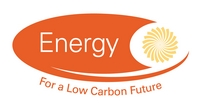Projects
Projects: Custom Search |
||
| Reference Number | EP/X022811/1 | |
| Title | Liquid Ammonia Direct Injection (LADI) fundamental physics and modelling of the aero-thermodynamic of transitional atomisation regime | |
| Status | Completed | |
| Energy Categories | Renewable Energy Sources 70%; Energy Efficiency (Transport) 30%; |
|
| Research Types | Basic and strategic applied research 100% | |
| Science and Technology Fields | ENGINEERING AND TECHNOLOGY (Mechanical, Aeronautical and Manufacturing Engineering) 100% | |
| UKERC Cross Cutting Characterisation | Not Cross-cutting 100% | |
| Principal Investigator |
Dr M M Jangi School of Mechanical Engineering University of Birmingham |
|
| Award Type | Standard | |
| Funding Source | EPSRC | |
| Start Date | 28 February 2023 | |
| End Date | 19 March 2024 | |
| Duration | 13 months | |
| Total Grant Value | £204,031 | |
| Industrial Sectors | ||
| Region | West Midlands | |
| Programme | UKRI MSCA | |
| Investigators | Principal Investigator | Dr M M Jangi , School of Mechanical Engineering, University of Birmingham (100.000%) |
| Web Site | ||
| Objectives | ||
| Abstract | This proposal develops the knowledge and technology for direct injection (DI) of liquid ammonia (LNH3), as green and carbon-free alternative liquid fuel for engine applications. This is a critical step toward the decarbonisationof heavy road transportation and the power production sector. According to the International Energy Association report, LNH3 is considered as "the low hanging fruit" carbon-free hydrogen alternative energy carrier for the following reasons (1). (1) Mass production and shipping infrastructure of LNH3 is already widely available thanks to its widespread applications in the fertiliser industry; (2) Storage of LNH3, in large quantity, is significantly safer and more economical than hydrogen-compared to hydrogen or natural gas (LNG), ammonia is liquefied at room temperature at 9.90 atm (similar to propane, a fuel with widespread domestic applications); (3) With a very high hydrogen density of kg H2 per 100 litres (even higher than liquid hydrogen), LNH3 is a prime hydrogen carrier. The heating value of LNH3 is lower than fossil fuels, e.g., diesel and gasoline, hence, more fuel is required to produce the same power out. The evolution in DI technology has enabled advanced injection strategies, by which highly precise and modulated multiple injections over an extended period of time allows delivering more fuels while improving the mixture quality by enhancing the evaporation and mixing. Especial emphasis is made on the recent engines developed at MAN and Wärtsilä, companies that are currently commercialising ammonia reciprocating engines for marine applications (2).Problem: In theory, pure LNH3 DI-engines, as a viable solution for full decarbonisation of power and road transportation sectors, is achievable. However, there are currently technological barriers that prevent the widespreaduse of LNH3 to completely replace fossil fuels with zero-carbon emission engines. This lays in the following facts:(1) the reactivity of ammonia/air mixtures is very low and quite incompatible with the engine operating conditions;(2) spray of LNH3 is different from fossil fuels and exhibits a highly non-linear and unsteady behaviour which trigger significant combustion instabilities and catastrophic engine failure. In this project, we focus on the second issue by investigating LNH3 sprays in DI-engine applications | |
| Data | No related datasets |
|
| Projects | No related projects |
|
| Publications | No related publications |
|
| Added to Database | 08/03/23 | |



